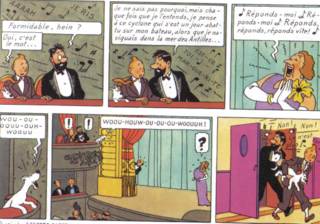
quelle critique brillante
Edith Piaf, La Vie En Rose.
"Voilà le portrait sans retouche..."
Was Edith Piaf a collaborator during the Occupation? Was she partially responsible, as some journalists hinted, for the unsolved murder of Louis Leplee, the cafe owner who discovered Piaf as a waif singing for change on a street off the Champs Elysees? Piaf never responded to the charges--all that concerned her was her singing and her love affairs, which were often one and the same.
"La Vie En Rose", recorded October 9, 1946, is her most famous, and most enduring, performance. Piaf is the prism through which 20th Century French music is refracted--she grew up learning the chansons of the nightclubs, brothels and circuses, and, after she became a star, she gathered a host of disciples that would define the postwar years, including Yves Montand and Charles Aznavour.
Short life of Piaf.
also in 1946, Jacques Prevert published his Paroles, one of which, "Je Suis Comme Je Suis," could have been Edith's anthem.
I Am As I Am (excerpt)
I am as I am
I'm made that way
When I feel like laughing
I burst right out
I love the one who loves me
Is it my fault especially
If it's not the same one
I love each time
I am as I am
I'm made that way
What else do you expect
What do you expect of me
I'm made to please
and can't change that
My heels are too high
My back too bent
My breasts much too hard
And my eyes too circled
And after all
What's it to you?....
Speaking of literature, the Tintin comic excerpted at the top of the post is from "The Seven Balls of Crystal", which was published between 1946 and 1948. Highly recommended.
No comments:
Post a Comment